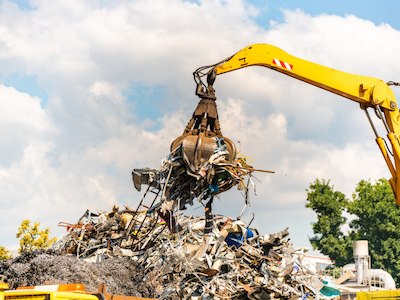Aluminum Scrap Markets

April 30, 2025
April survey says things are steady, but the market’s telling a different story
Written by Gabriella Vagnini
We just wrapped up the April edition of the AMU survey, and the message coming from across the aluminum value chain was that things are holding steady. Demand is stable, freight is easing, and UBC pricing seems to be coasting. On the surface, it doesn’t sound too bad. But once you lay those responses next to what’s being said out in the field, there’s missed earnings, supply pressure building, container disruptions, and fresh tariffs hitting. What you get is a market that’s not crashing, but certainly not coasting comfortably either.
Demand
Most of the survey responses painted a picture of steady demand. About 56% said things are stable, and another 35% felt demand was improving. That all sounds reassuring, but it doesn’t quite line up with what’s been happening. Norsk Hydro missed earnings and lowered its 2025 outlook, citing weakness in construction and automotive demand. CRU analysts flagged the same risk in their outlook, saying that U.S. aluminum demand in 2025 faces real headwinds, with trade uncertainty and soft end-use sectors weighing on any chance of a rebound. One producer noted that can stock and beverage cans might be recession-resistant, but they are beginning to see some signs of softening. A trader tied to the auto space added that sales had spiked just ahead of the tariff announcements, but since then, it’s been a waiting game. The bottom line is that what some call “steady” might just be “survivable.”
Supply
As for supply, most respondents said U.S. production and delivery were keeping up with demand. But again, when you zoom out and look at the broader market, that confidence starts to waver. Global analysts are projecting a deficit of over 600,000 mt this year. China’s at full throttle with not much room to grow, and there’s little new capacity coming online elsewhere. Scrap consumers are already feeling the squeeze. One mill mentioned they rely heavily on UBC volumes to hit production targets because the cost savings over primary aluminum are substantial. Another recycler, sourcing heavily from Central and South America, said they’re still collecting at decent volumes, but they’re getting nervous about where they’ll even be able to send material in the months ahead.
Tariff shifts
The most noticeable shift in this month’s survey was around tariffs. In March, tariffs were background noise. In April, they were front and center. About 30% of respondents said the new tariffs had already caused them to pause activity. One trader called it impossible to plan anything with the Trump tariffs hanging in the air, and said that if the 10% scrap duty sticks, material will just shift toward Brazil, Saudi Arabia, Thailand, or Korea. Another exporter noted that many players in the trade space are simply sitting on the sidelines until they know what they’re working with. A logistics rep added that there’s just no real mid-term certainty anymore. That’s textbook tariff behavior; we saw it in 2018. Once trade policy gets murky, people start pulling back.
Freight and container
Freight and container costs were a rare bright spot in the April data. More respondents reported rates declining, and they’re not wrong. Ocean freight dropped more than 20% over the past month as global volumes softened and vessel availability improved. But there’s a new issue looming: container scarcity. With fewer imports coming in from China due to the tariffs, ports like L.A. are already seeing a sharp drop in incoming boxes. And that means fewer empties are available to load outbound cargo. One scrap processor said they don’t even ship that much internationally anymore, but it’s already getting harder to move material, domestically included.
Inventory strategies
Inventory strategies also reflect a market that’s playing defense, not offense. Most respondents said they’re holding stock steady or drawing it down. Very few are building inventories, which says a lot. One respondent said they had a great March, one of their best, but they’re not betting that momentum will carry into Q2. Another scrap dealer said they’re simply watching to see if consumers come back into the market. The hesitation is clear. When people think demand is about to surge, they stock up. When they don’t, they wait.
All in, the market isn’t falling apart, but it’s stuck in a holding pattern. April’s survey responses reflect a wait-and-see mindset. Scrap companies are starting to feel pressure first, and in this industry, they’re often the early warning system. Supply might be holding up for now, but if that projected deficit unfolds, it won’t stay that way for long. And with tariffs already impacting planning and container availability shrinking, it won’t take much to tip sentiment the other way.







